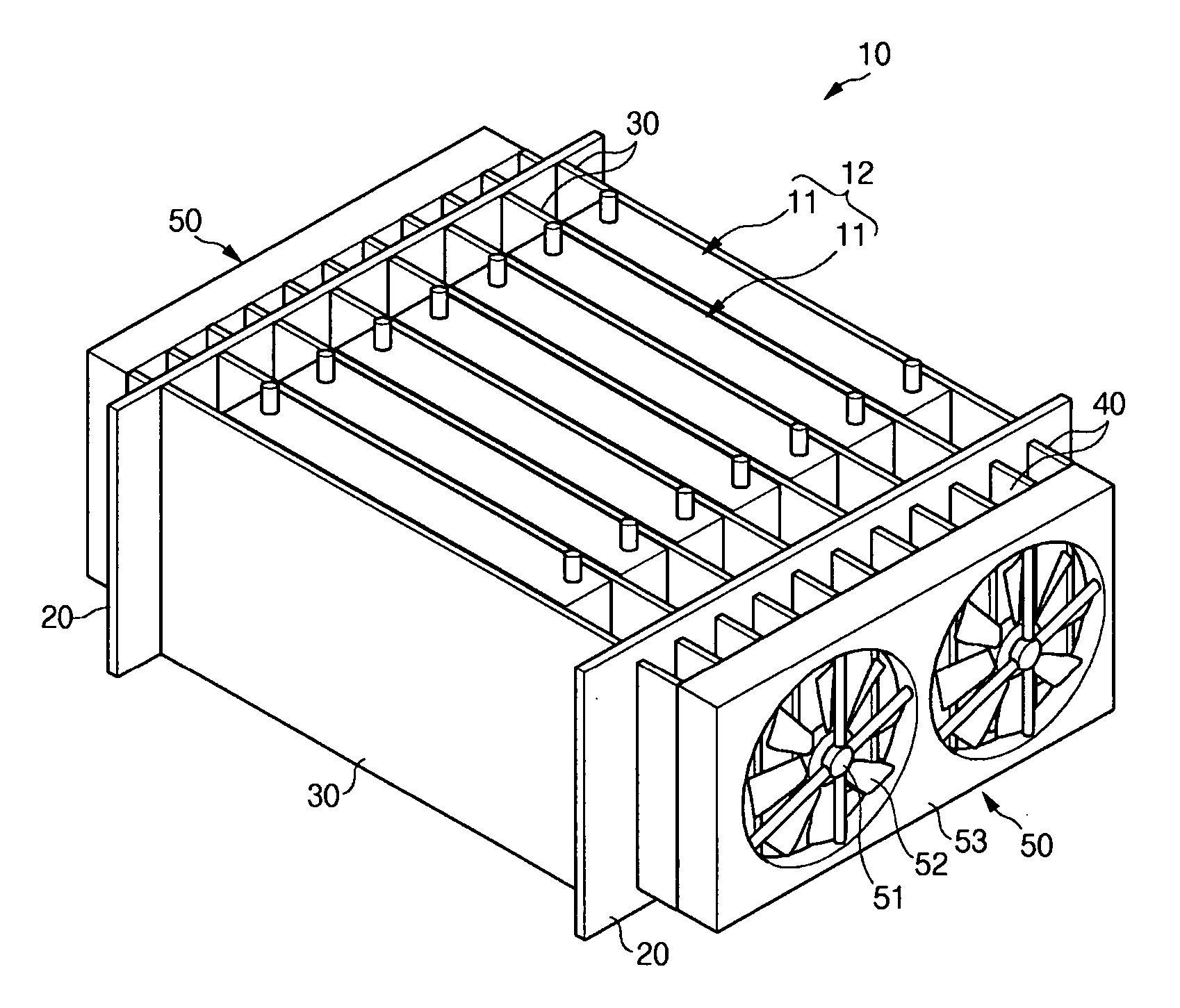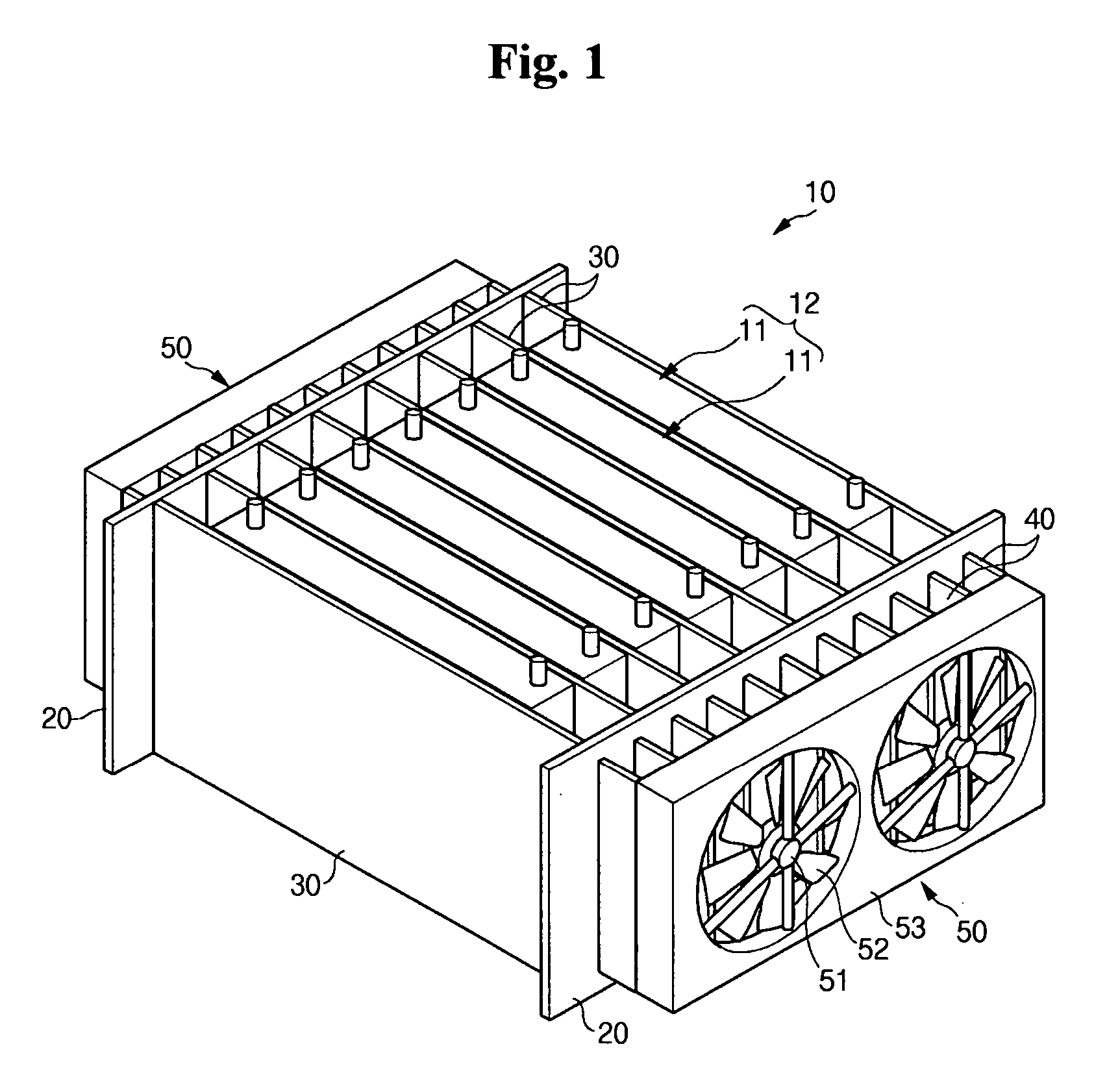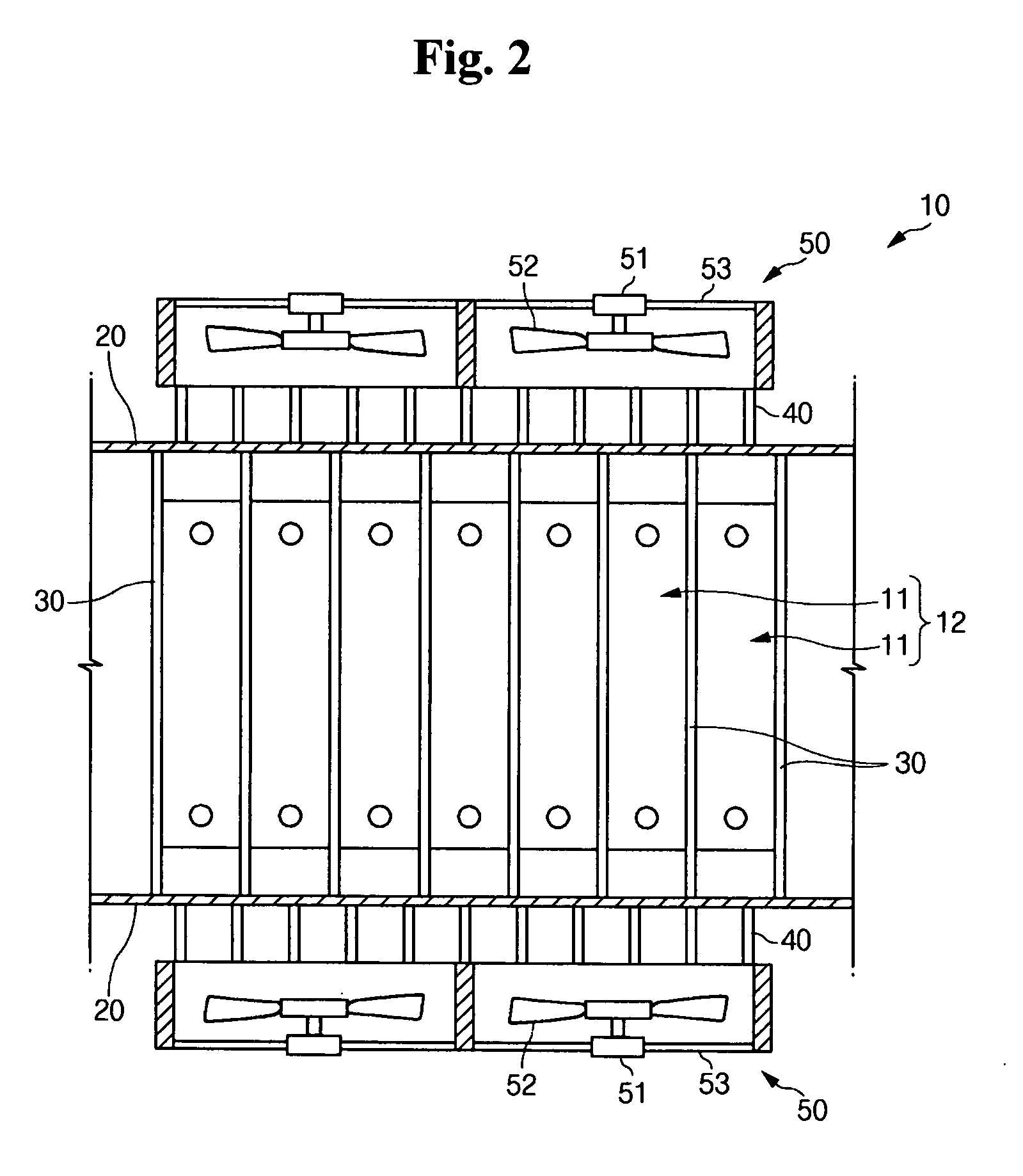Secondary battery module
a secondary battery and module technology, applied in the field of secondary batteries, can solve the problems of unit batteries bursting, low charge-discharge efficiency, and lowering the performance of batteries, and achieve the effect of improving cooling efficiency
- Summary
- Abstract
- Description
- Claims
- Application Information
AI Technical Summary
Benefits of technology
Problems solved by technology
Method used
Image
Examples
first embodiment
[0031]FIG. 1 is a schematic perspective view of a secondary battery module according to the present invention.
[0032] Referring to the drawing, the battery module 10 includes: a plurality of unit batteries 11, each unit battery having an electrode assembly to generate electric power, in which a separator is interposed between a positive electrode and a negative electrode; cell barrier plates 30 disposed in contact with the unit batteries 11 to transfer heat generated from the unit batteries 11; cooling plates 20 disposed in contact with a side end of the cell barrier plates 30; heat dissipation ribs 40 disposed in the outer surface of each cooling plate 20 and spaced apart from each other; and cooling fans 50 for pulling in cooling air toward the heat dissipation ribs 40.
[0033] The cooling plates 20 have a plate structure with a predetermined thickness. Each cooling plate 20 is disposed in contact with one end of the cell barrier plates 30 and extends over both side ends of the plur...
second embodiment
[0055]FIG. 3 is a partial cross-sectional view of a secondary battery module according to the present invention, in which at least one thermoelectric element 60 is disposed on the outer surface of the cooling plate.
[0056] The thermoelectric element 60 is an element which performs exothermic reaction or endothermic reaction by use of hetero-metal or semiconductor, but is not limited to just these types.
[0057] For example, the thermoelectric element 60 can be an element which uses a cooling effect generated by combining bipolar semiconductors.
[0058] In order to exhaust the heat of the cooling plate 20, the thermoelectric elements 60 according to the present embodiment have a structure such that they can absorb the heat transferred to the cooling plate 20, and allows the heat to be transferred to the cooling air that passes the cooling plate 20.
[0059] The following will now describe in more detail how battery module 10′ operates. As cooling air is forcefully supplied to the outside ...
third embodiment
[0061]FIG. 4 is a cross-sectional view of a secondary battery module according to the present invention. Referring to the drawing, the battery module 10″ according to the present embodiment includes a housing 70 receiving the unit batteries 11.
[0062] In addition, the battery module 10″ according to the present embodiment includes a plurality of unit batteries 11, cell barrier plates 32 disposed between neighboring unit batteries 11, and cooling plates 21 disposed in both ends of the cell barrier plates 32. The cooling plates 21 have a plurality of cooling ribs 41.
[0063] The cell barrier plates 32 have widths corresponding to the width of the unit batteries 11, and are disposed between neighboring unit batteries 11. Accordingly, the cooling plates 21 have a structure that is in contact with not only the cell barrier plates 32 but also the side surfaces of the unit batteries 11.
[0064] The housing 70 has an opened inlet 72 to allow cooling air to flow inside. The inlet 72 is disposed...
PUM
| Property | Measurement | Unit |
|---|---|---|
| thermoelectric | aaaaa | aaaaa |
| power | aaaaa | aaaaa |
| shape | aaaaa | aaaaa |
Abstract
Description
Claims
Application Information
 Login to View More
Login to View More - R&D
- Intellectual Property
- Life Sciences
- Materials
- Tech Scout
- Unparalleled Data Quality
- Higher Quality Content
- 60% Fewer Hallucinations
Browse by: Latest US Patents, China's latest patents, Technical Efficacy Thesaurus, Application Domain, Technology Topic, Popular Technical Reports.
© 2025 PatSnap. All rights reserved.Legal|Privacy policy|Modern Slavery Act Transparency Statement|Sitemap|About US| Contact US: help@patsnap.com



